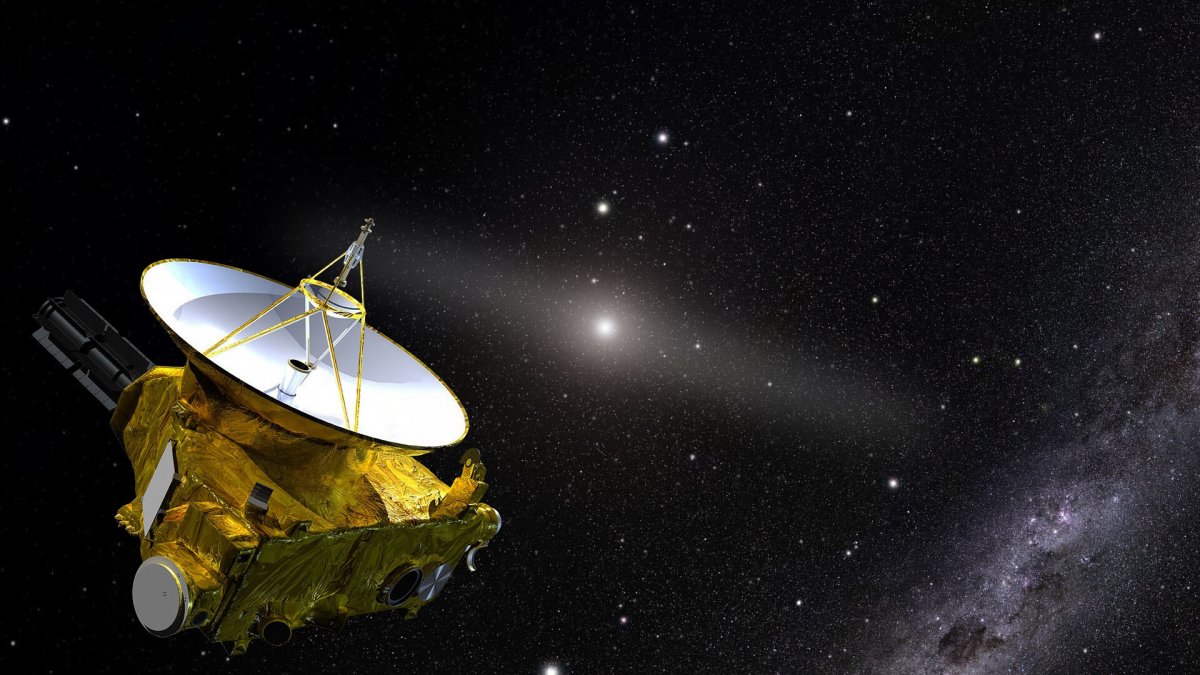Measurements at the edge of the solar system: The universe is brighter than expected
Source: Heise.de added 14th Jan 2021Our universe is quite dark, but it is brighter than assumed. At least one group of researchers who evaluated data from NASA’s New Horizons probe came to this conclusion. After all, it is further away from the sun than almost all other earthly instruments. At a distance of well over seven billion kilometers from our home star, their starry sky is measurably darker than anything we or probes in the inner solar system see, the researchers explain. Measurements carried out in this environment would have shown that it is a little brighter there than expected. The origin of this light is still unknown.
New Horizons researches and researches New Horizons was started 2006 and had on 14. July 2015 is the first probe ever to pass the dwarf planet Pluto. She had revealed a surprisingly complex world. Two years ago it was the first human object to reach a celestial body in the even further distant Kuiper Belt – Arrokoth with its snowman shape. It hasn’t had a new target since, but most recently it helped astronomers make the largest parallax measurement in history. At the same time, its instruments continue to work and it provides valuable data for exploring the limits of the solar system.
That far from the sun, its influences are actually once again significantly smaller, the researchers now explain. It is around ten times darker around New Horizons than in the darkest places that the Hubble Space Telescope can target in Earth orbit. How bright it is at New Horizons, however, was determined using the so-called LORRI cameras on board. After subtracting known light sources such as the Milky Way and known reflection sources, it turned out that more light was left than expected. The scientists who presented their analysis at a meeting of the American Astronomical Society do not know its origin.
“Only” hundreds of billions of galaxies It is possible that a large number of dwarf galaxies exist in the vicinity of the Milky Way just below the detectability. The halos around galaxies could also be brighter than previously assumed. It is also possible that there are many more unbound stars in intergalactic space than current theories predict. In the meantime, however, the measurements would also have shown that the number of galaxies that cannot be directly detected must be significantly lower than expected. There seems to be “only” hundreds of billions of galaxies in the universe and not around two trillion, as was recently determined with Hubble.
Pluto probe New Horizons ( 67 Pictures) Plutos Surface
(Image: NASA / Johns Hopkins University Applied Physics Laboratory / Southwest Research Institute) (mho)
brands: First New Orbit other Planet Samsung Space SUN Unbound UNKNOWN media: Heise.de keywords: NASA Samsung
Related posts
Notice: Undefined variable: all_related in /var/www/vhosts/rondea.com/httpdocs/wp-content/themes/rondea-2-0/single-article.php on line 88
Notice: Undefined variable: all_related in /var/www/vhosts/rondea.com/httpdocs/wp-content/themes/rondea-2-0/single-article.php on line 88
Related Products
Notice: Undefined variable: all_related in /var/www/vhosts/rondea.com/httpdocs/wp-content/themes/rondea-2-0/single-article.php on line 91
Warning: Invalid argument supplied for foreach() in /var/www/vhosts/rondea.com/httpdocs/wp-content/themes/rondea-2-0/single-article.php on line 91
